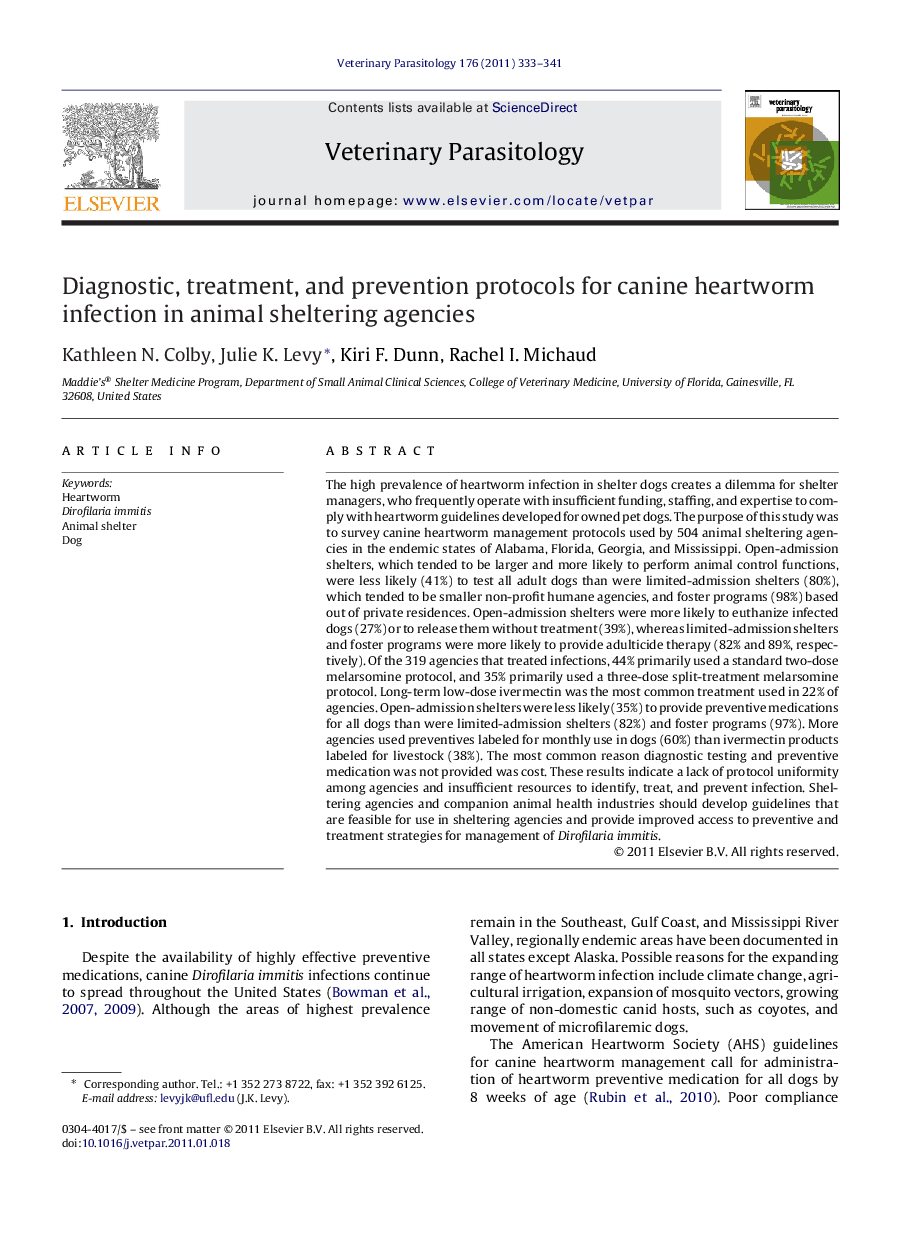| کد مقاله | کد نشریه | سال انتشار | مقاله انگلیسی | نسخه تمام متن |
|---|---|---|---|---|
| 2470375 | 1112493 | 2011 | 9 صفحه PDF | دانلود رایگان |

The high prevalence of heartworm infection in shelter dogs creates a dilemma for shelter managers, who frequently operate with insufficient funding, staffing, and expertise to comply with heartworm guidelines developed for owned pet dogs. The purpose of this study was to survey canine heartworm management protocols used by 504 animal sheltering agencies in the endemic states of Alabama, Florida, Georgia, and Mississippi. Open-admission shelters, which tended to be larger and more likely to perform animal control functions, were less likely (41%) to test all adult dogs than were limited-admission shelters (80%), which tended to be smaller non-profit humane agencies, and foster programs (98%) based out of private residences. Open-admission shelters were more likely to euthanize infected dogs (27%) or to release them without treatment (39%), whereas limited-admission shelters and foster programs were more likely to provide adulticide therapy (82% and 89%, respectively). Of the 319 agencies that treated infections, 44% primarily used a standard two-dose melarsomine protocol, and 35% primarily used a three-dose split-treatment melarsomine protocol. Long-term low-dose ivermectin was the most common treatment used in 22% of agencies. Open-admission shelters were less likely (35%) to provide preventive medications for all dogs than were limited-admission shelters (82%) and foster programs (97%). More agencies used preventives labeled for monthly use in dogs (60%) than ivermectin products labeled for livestock (38%). The most common reason diagnostic testing and preventive medication was not provided was cost. These results indicate a lack of protocol uniformity among agencies and insufficient resources to identify, treat, and prevent infection. Sheltering agencies and companion animal health industries should develop guidelines that are feasible for use in sheltering agencies and provide improved access to preventive and treatment strategies for management of Dirofilaria immitis.
Journal: Veterinary Parasitology - Volume 176, Issue 4, 22 March 2011, Pages 333–341